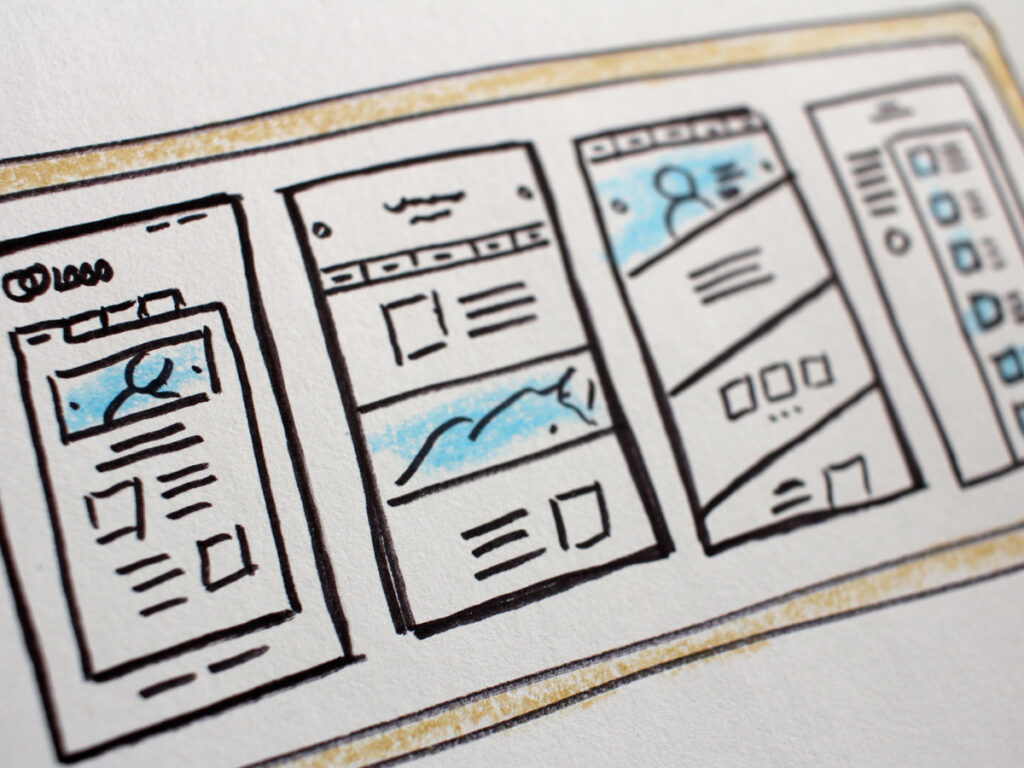Knowledge
The Preliminary Guide to Starting a Website: A Creative Agency Perspective

In today's digital landscape, contemplating a robust online presence is paramount. Whether you're a budding entrepreneur, a creative agency, or someone with a passion project, starting a website is the first step to marking your digital footprint. This guide is tailored to help you navigate the initial considerations of building a website.
In today’s digital landscape, contemplating a robust online presence is paramount. Whether you’re a budding entrepreneur, a creative agency, or someone with a passion project, starting a website is the first step to marking your digital footprint. This guide is tailored to help you navigate the initial considerations of building a website.
Step 1: Identifying the ‘Why’
Every successful website starts with a purpose. Whether you’re aiming to showcase a portfolio, establish a brand presence, or create an e-commerce platform, understanding your core objective is essential. This clarity will guide your design, content, and SEO strategies.
Step 2: Research and Inspiration
Before diving into the design and build phase:
- Competitor Analysis: Explore websites of similar businesses or creative agencies. Understand the industry benchmarks and identify gaps you can fill.
- Design Inspiration: Platforms like Pinterest can offer a plethora of design ideas. Keep an eye out for trending website designs that resonate with your brand ethos.
Step 3: Audience Identification
Your website should cater to your target audience. Consider:
- Demographics: Understand the age, gender, and location of your potential visitors.
- User Behavior: Analyze online behavior patterns to tailor your website’s user experience.
Step 4: Goal Setting
With your website, what milestones do you aim to achieve?
- Traffic Goals: Set realistic targets for monthly visitors.
- Engagement Metrics: Determine the desired user engagement levels, such as average time spent on the site or the number of pages visited.
Step 5: Functional Requirements
List down the essential features your website must offer:
- E-commerce Capabilities: If you’re planning to sell products or services.
- Interactive Elements: Consider adding chatbots, contact forms, or interactive portfolios, especially if you’re a creative agency showcasing work.
Step 6: Budget Considerations
Building a website involves various costs:
- Development Costs: This includes website builder subscriptions or fees for hiring a professional.
- Maintenance Costs: Ongoing expenses to ensure your website remains functional and up-to-date.
Step 7: Domain Name Brainstorming
Your domain name is your brand’s online identity. Ensure it’s:
- Relevant: Reflective of your brand or services.
- SEO-Friendly: Incorporate keywords related to your business for better search engine visibility.
Step 8: Preliminary SEO Planning
Even at the contemplation stage, SEO is crucial:
- Keyword Research: Identify primary keywords associated with your business or services. Tools like Google’s Keyword Planner can be invaluable.
- Content Strategy: Plan to create content that not only engages users but also ranks well on search engines.
Step 9: Learning Basic Legalities
Stay compliant and protect your online space:
- Privacy Policies: Understand the legal documents required, especially if you’re collecting user data.
- Copyright Laws: Protect your content and ensure you’re not infringing on others’ rights.
Step 10: Gathering Resources
Start accumulating resources you’ll need:
- Content: This includes written material, images, videos, and more.
- Design Tools: Familiarize yourself with tools that can aid in website design, especially if you’re not hiring a professional.
Step 11: Skill Acquisition
If you’re taking the DIY route:
- Basic Coding: Familiarize yourself with HTML and CSS for customizations.
- Design Principles: Understand basic design principles to ensure your website is visually appealing.
Conclusion
Starting a website is more than just design and build; it’s about creating a digital space that resonates with your brand and appeals to your audience. By considering the aspects mentioned in this guide, you’re laying a robust foundation for your online journey. Remember, in the digital realm, the first impression is often the last, so make it count!
